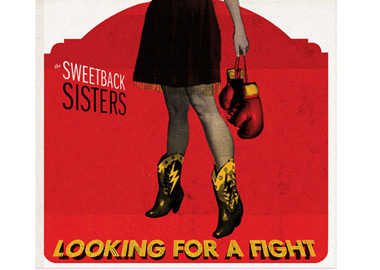The Sweetback Sisters
Looking for a Fight
(Signature Sounds)
The retro-powered, girl-fronted Sweetback Sisters present a convincing flashback to the Grand Ole Opry golden era of country music, aided in part by analog production, live basic tracks, ribbon mics and slap-back delays. Layers of twangy guitars, banjos, fiddles and pedal steel provide a fertile bed for vocalists Zara Bode and Emily Miller’s corn-fed harmonies, and trumpet and organ moments add some chili pepper on tracks with more Tex-Mex flavor. Performances hearken back to divas like Patsy Cline, Dolly Parton and Loretta Lynn, and covers range from Dwight Yoakam to the Traveling Wilburys, but they’re equally charming with originals, lassoing even reluctant smilers with a dead-on rendering of barroom bravado in “Too Many Experts.” Bode and guitarist Ross Bellenoit have roots in the Valley, but generally broadcast their uncanny hipsterbilly illusion from Brooklyn. —Tom Sturm
*
Perfume Genius
Put Your Back N 2 It
(Matador)
Already courting controversy with a teaser video deemed “not family safe” by YouTube, singer/songwriter Michael Hadreas (aka Perfume Genius) offers a surprisingly delicate song cycle of reverie and release with Put Your Back N 2 It. But that doesn’t mean the music lacks punch. While most tracks are slow-burners consisting of just Hadreas’ voice and soft piano, the themes are often hot enough to leave scars. War, heartbreak, despair—all these topics get time in the spotlight. “Floating Spit” departs from the rest of the record’s formula with drum machine beats and vocals that sound like they were recorded in the bottom of a well. The album’s running time is short enough that listeners need not dwell on the depression. On the other hand, with the longest at only 3 minutes and 16 seconds, many songs could have benefitted from sticking around for a while longer. —Michael Cimaomo
*
The Grateful Dead (and others)
Dawn of the Dead
(Sexy Intellectual)
The Grateful Dead machine continues to pump out product. Dawn of the Dead is the most comprehensible film project ever done on the Grateful Dead. The band is placed within a broader context: folk music, jug bands, avant-garde modernism and emerging subcultures. The Dead are central, but the video gives lots of screen time to others, including The Jefferson Airplane, Janis Joplin and Quicksilver Messenger Service. We witness the rise of mid-’60s utopian dreams, their demise amidst San Francisco’s post-’67 urban chaos and the 1969 Altamont festival, and the Americana musical retreat beaten by psychedelic artists. The film is a dizzying tour of musical (and hippie) milestones. Caution: The film lacks critical historical analysis to balance rock critics and musicians who misinterpret the multidimensionality of the counterculture, politics, and events that occurred outside of Haight-Ashbury. —Rob Weir



